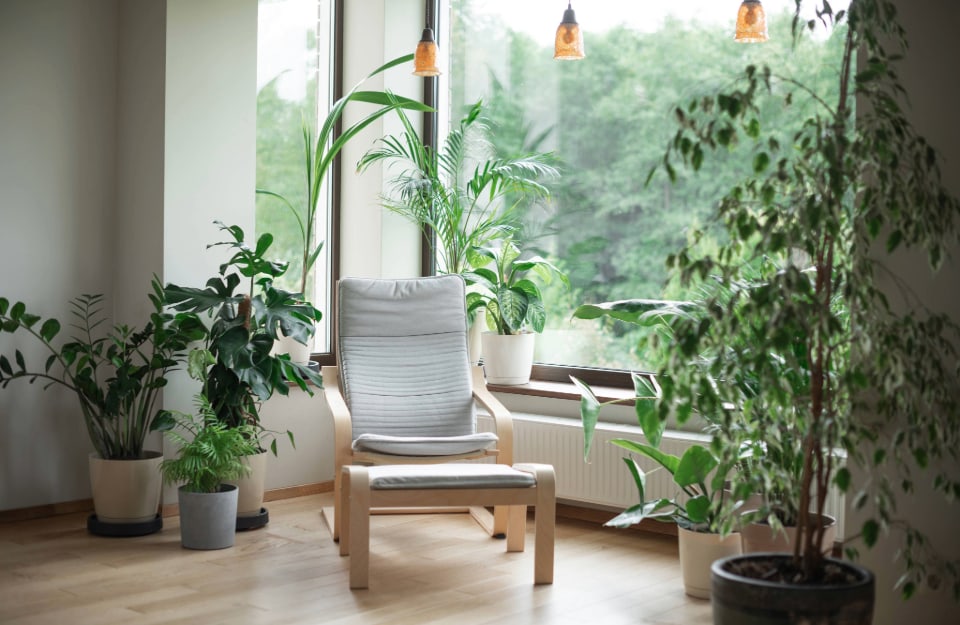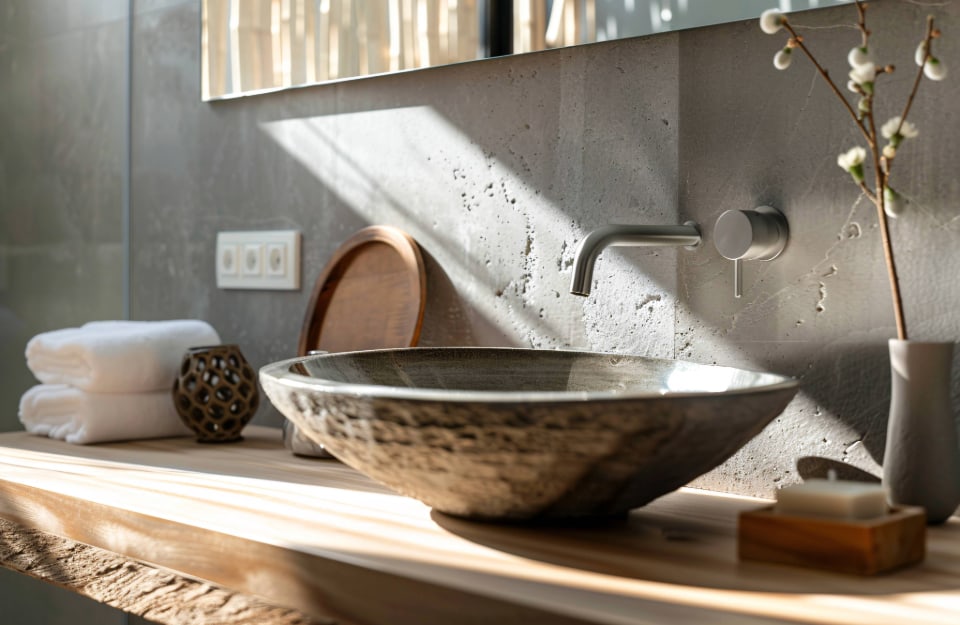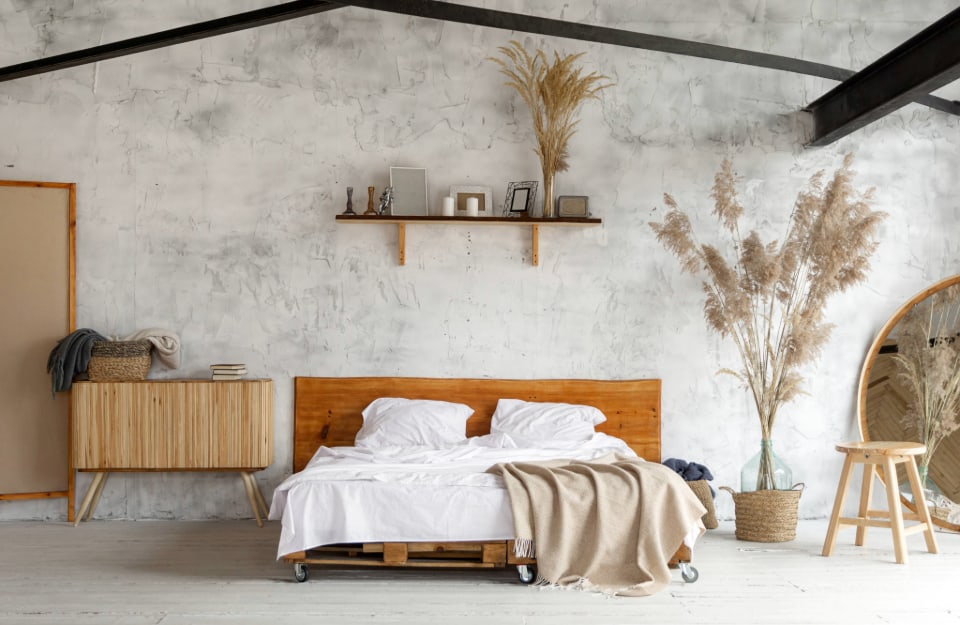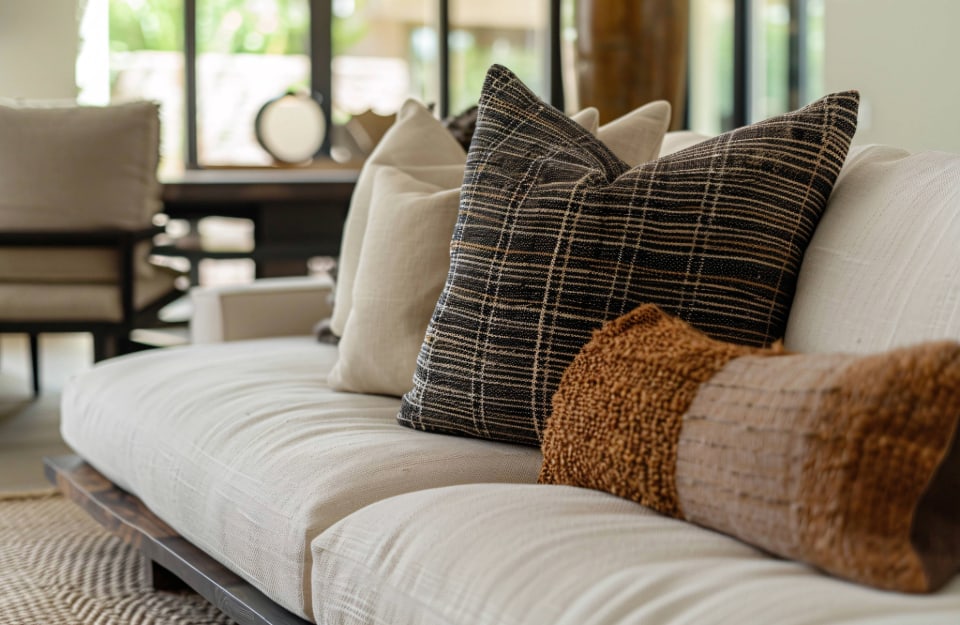Making a comeback in recent years, the Organic Modern style actually originated almost a century ago and has evolved over the decades through contamination with other styles. Essential but cosy, no-frills but elegant, it can be defined as ‘warm minimalism’, characterised by the use of natural materials and lines.
Where does the organic modern style come from?

The origins can be traced back to the thought and work of one of the greatest architects of the 19th and 20th centuries: the American Frank Lloyd Wright. It was he who conceived the so-called organic architecturewhich he systematised in the 1939 book An Organic Architecture: The Architecture of Democracy and which he defined as follows: ‘Organic is an architecture that develops from the inside to the outside, in harmony with the conditions of its being, as distinct from an architecture applied from the outside. Environment and building are one; planting trees in the ground surrounding the building, as much as furnishing the building itself, take on a new importance, as they become elements in harmony with the interior space in which one lives. The place (the building, the furniture) – and also the decoration, and also the trees – all become one in organic architecture. All aspects of living must come together in a synthesis with the external environment’. In the years that followed, designers and architects such as the Finns Alvar Aalto and Eero Saarinen, the Americans Charles and Ray Eames and the Hungarian Marcel Breuer helped to push the discourse forward.
As far as interior design was concerned, a seminal exhibition organised by the MoMA in New York in 1941. Entitled Organic Design in Home Furnishings, it introduced the world to Saarinen, Eames, Aalto and Breuer. In the current interpretation of organic modern, influences from Scandinavian style, Mid-Century Modern and boho chic also converge.
Characteristics of the organic modern style and furnishing tips

- Natural materials: wood, stone, terracotta, ceramics, bamboo, wicker, rattan, fabrics such as linen, jute and raw cotton. However, there is also room for metal and glass, for accent elements such as handles, lamps and frames.
- Organic lines: furniture and decoration with soft shapes and curved lines, inspired by nature, contrasting with the edges and straight lines of contemporary minimalism.
- Functional elements: no ‘decorativism’, objects and furniture are chosen for their functionality.
- Wooden furniture with natural, non-glossy finishes, such as Rio Verde’s RO 3000 natural effect finish, which decorates and protects wood while maintaining its original appearance.
- Minimal use of decoration: only a few but significant elements reflecting the natural and modern theme are needed.
- Use of different textures: smooth, rough, stony, woody, metallic… They help create depth and give more naturalness to the whole.
- Horizontal furniture, such as consoles and long tables.
- Balance between organic design pieces and minimal furniture.
- Natural light: one tends to make the most of it, with large windows and no or very thin curtains. It is precisely through the windows – conceived as frames of the surrounding landscape – that continuity between outside and inside is sought.
- Plants: they too create an ideal dialogue between inside and outside.
Colours

The palette of organic modern is mainly composed of warm neutral colours. Hence shades of white,ecru, beige, taupe and greys contaminated with a hint of yellow or red. Make way for brighter colours, especially as secondary colours: olive green, moss green, terracotta, deep blue tones, earthy and burnt yellows, chocolate brown.
In conclusion

Very close to today’s concerns about sustainability and the environment, organic modern creates a perfect balance between a contemporary minimalist spirit and the search for a cosy environment in which to relax and get in touch with nature.


